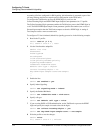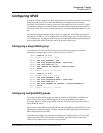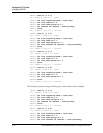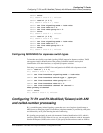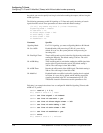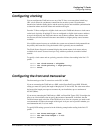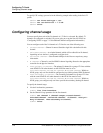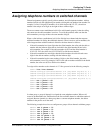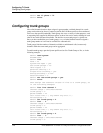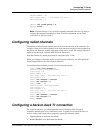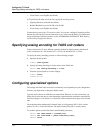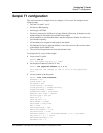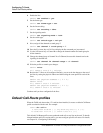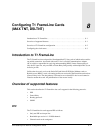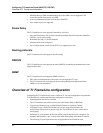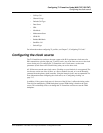
7-20 Preliminary May 9, 2000 APX 8000/MAX TNT/DSLTNT Physical Interface Configuration Guide
Configuring T1 Cards
Configuring trunk groups
admin> set 13 phone = 72
admin> write
Configuring trunk groups
Like nailed channels that have been assigned a group number, switched channels in a trunk
group can be referred to from a Connection profile and Call-Route profile to direct outbound
calls to use that specific bandwidth. Trunk groups also serve a variety of other purposes, such
as separating lines supplied by different carriers so those lines can be used as backup for each
other if one switch becomes unavailable. The decision to use trunk groups is a global one.
Once you have enabled the use of trunk groups, every switched channel must be assigned a
trunk group number or it will not be available for outbound calls.
Trunk groups limit the number of channels available to multichannel calls, because only
channels within the same trunk group can be aggregated.
To enable trunk groups, open the System profile and set Use-Trunk-Groups to Yes, as in the
following example:
admin> read system
SYSTEM read
admin> list
name = ""
system-rmt-mgmt = yes
use-trunk-groups = no
idle-logout = 0
parallel-dialing = 2
single-file-incoming = yes
analog-encoding = a-law
sessionid-base = 0
admin> set use-trunk-groups = yes
admin> write
Then assign the channels of each T1 line to a trunk group, as
in the following example:
admin> list line channel 1
channel-usage = switched-channel
trunk-group = 9
phone-number = ""
call-route-info = { any-shelf any-slot 0 }
nailed-group = 0
admin> set trunk-group = 4
admin> list .. 2
channel-usage = switched-channel
trunk-group = 9
phone-number = ""
call-route-info = { any-shelf any-slot 0 }
nailed-group = 0
admin> set trunk-group = 4
admin> list .. 3
channel-usage = switched-channel
trunk-group = 9



